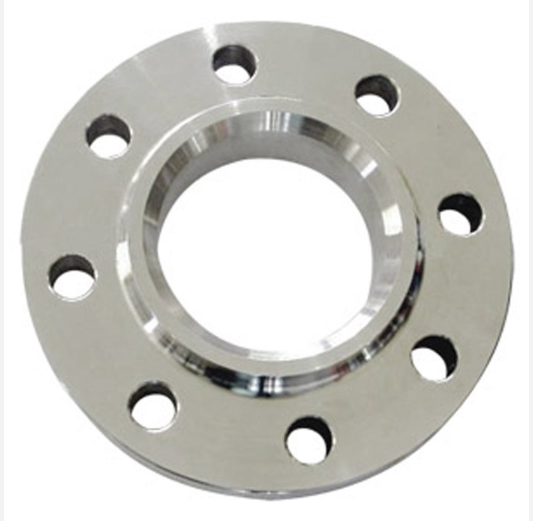Introduction
Stainless steel flanges play a crucial role in various industries, providing a reliable and durable connection between pipes, valves, and other components. These flanges come in different types and are designed to meet specific application requirements. In this comprehensive guide, we will explore the various types of stainless steel flanges, highlighting their applications and emphasizing the significance of stainless steel flat bars in this context.
Types of stainless steel flanges
- Weld Neck Flanges: Users recognize weld neck flanges for their high strength and stability. A long neck, which is welded to the pipe, provides reinforcement and reduces stress concentration. Industries, such as petrochemical and oil and gas, commonly use these flanges in high-pressure and high-temperature applications.
- Slip-On Flanges: Slip-on flanges are easy to install and are ideal for applications with low pressure. They slide over the pipe and are then welded in place. These flanges are commonly used in industries where quick assembly and disassembly are required, such as in water treatment plants.
- Socket Weld Flanges: Socket weld flanges have a recessed area, or socket, where the pipe end fits. These flanges are suitable for small-sized, high-pressure applications. They are widely used in chemical processing industries and oil refineries.
- Threaded Flanges: Threaded flanges have threads on the inner surface and are screwed onto the pipe. They are convenient for low-pressure applications and are commonly used in plumbing systems and small-scale industries.
- Blind Flanges: Blind flanges are used to close the end of a pipe, making them suitable for applications where the pipe needs to be closed off, inspected, or cleaned. These flanges are widely used in the chemical and pharmaceutical industries.
- Lap Joint Flanges: Lap joint flanges consist of two parts – a stub end and a backing flange. The stub end is welded to the pipe, and the backing flange is free to rotate. These flanges are suitable for applications that require easy alignment and assembly, such as in the food processing industry.
- Orifice Flanges: Orifice flanges are designed for measuring the flow rate of liquids or gases within a pipeline. They have a small opening that can accommodate an orifice plate. These flanges are commonly used in the oil and gas industry for flow measurement and control.
- Stainless Steel Flat Bars in Flange Manufacturing: Stainless steel flat bars play a critical role in the manufacturing of flanges. These bars are used to create the flat face of flanges, providing a smooth and even surface for sealing purposes. The use of stainless steel ensures corrosion resistance, making it an ideal material for flange applications. The flat bars are carefully machined and shaped to meet the specific dimensions and tolerances required for different flange types.
The flat bars are often chosen for their excellent mechanical properties, including high tensile strength and durability. Moreover, stainless steel’s resistance to corrosion and oxidation enhances the longevity and reliability of flanges, especially in harsh industrial environments.
Applications of Stainless Steel Flanges:
- Oil and Gas Industry: Stainless steel flanges find extensive use in the oil and gas industry, where they are employed in pipelines, refineries, and offshore drilling platforms. The corrosion resistance of stainless steel ensures the integrity of the connections in these critical applications.
- Chemical Processing: Chemical processing plants utilize various types of stainless steel flanges to connect pipes and valves in the transportation of corrosive chemicals. The resistance of stainless steel to chemical corrosion makes it a preferred material for such applications.
- Water Treatment: In water treatment facilities, slip-on and threaded flanges are commonly used due to their ease of installation. Stainless steel’s hygienic properties and resistance to corrosion make it suitable for water treatment applications.
- Food and Beverage Industry: In the food and beverage industry, people use lap joint flanges, which often feature stainless steel flat bars, because they provide easy alignment and assembly. The corrosion resistance of stainless steel ensures compliance with hygiene standards.
- Pharmaceutical Industry: In pharmaceutical manufacturing, blind flanges play a role in closing off pipes during sterilization processes. The use of stainless steel in these flanges prevents contamination and ensures the integrity of the pharmaceutical products.
Conclusion:
Stainless steel flanges are versatile components that play a crucial role in connecting pipes and ensuring the integrity of fluid transportation systems across various industries. Understanding the different types of flanges and their applications is essential for selecting the right components for specific operational requirements.
The incorporation of stainless steel flat bars in flange manufacturing enhances the overall performance. The longevity of these critical components. As industries continue to evolve, the expected growth in demand for durable, corrosion-resistant, and reliable flange solutions, often incorporating stainless steel flat bars, reinforces the importance of these components in modern engineering and industrial processes.



